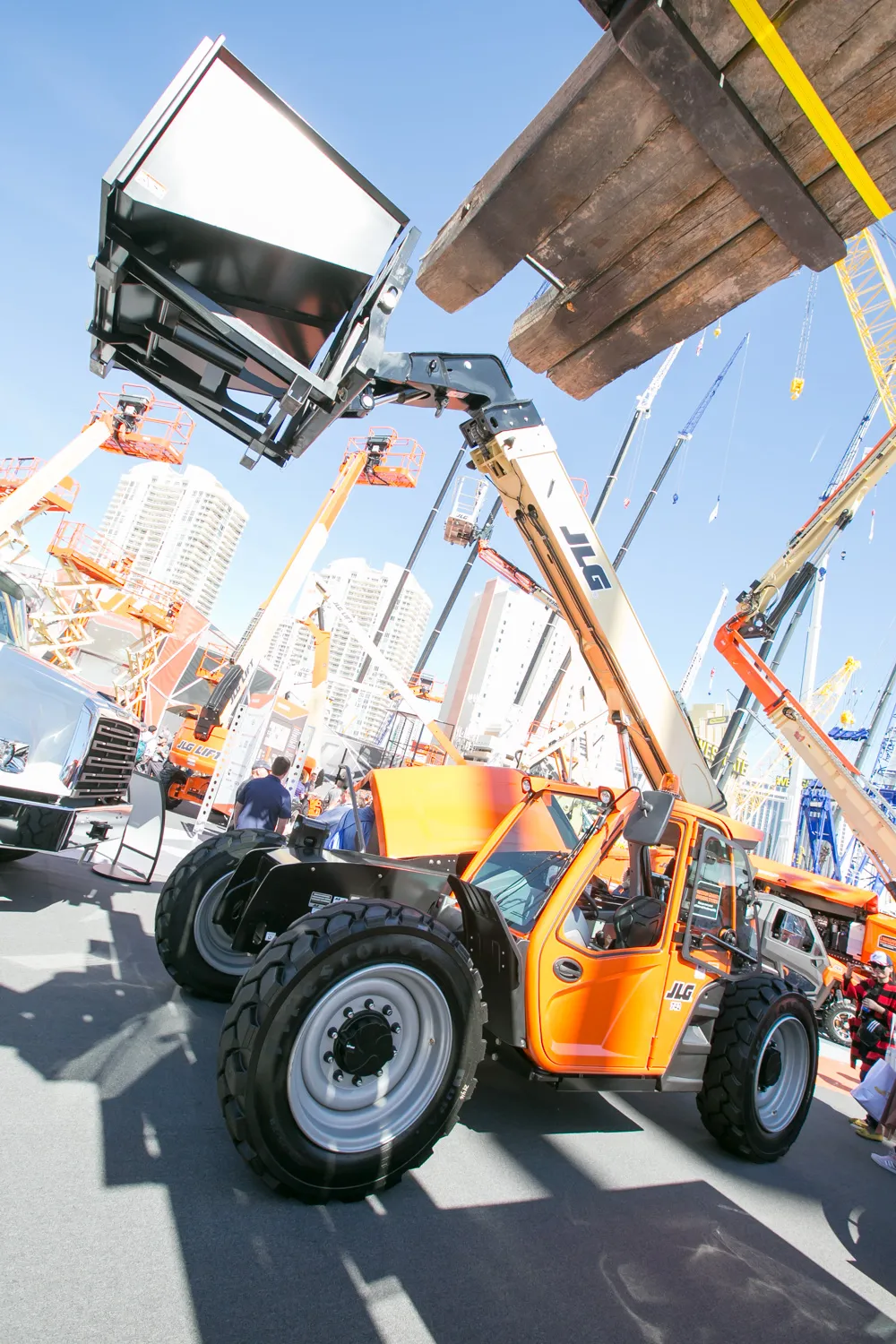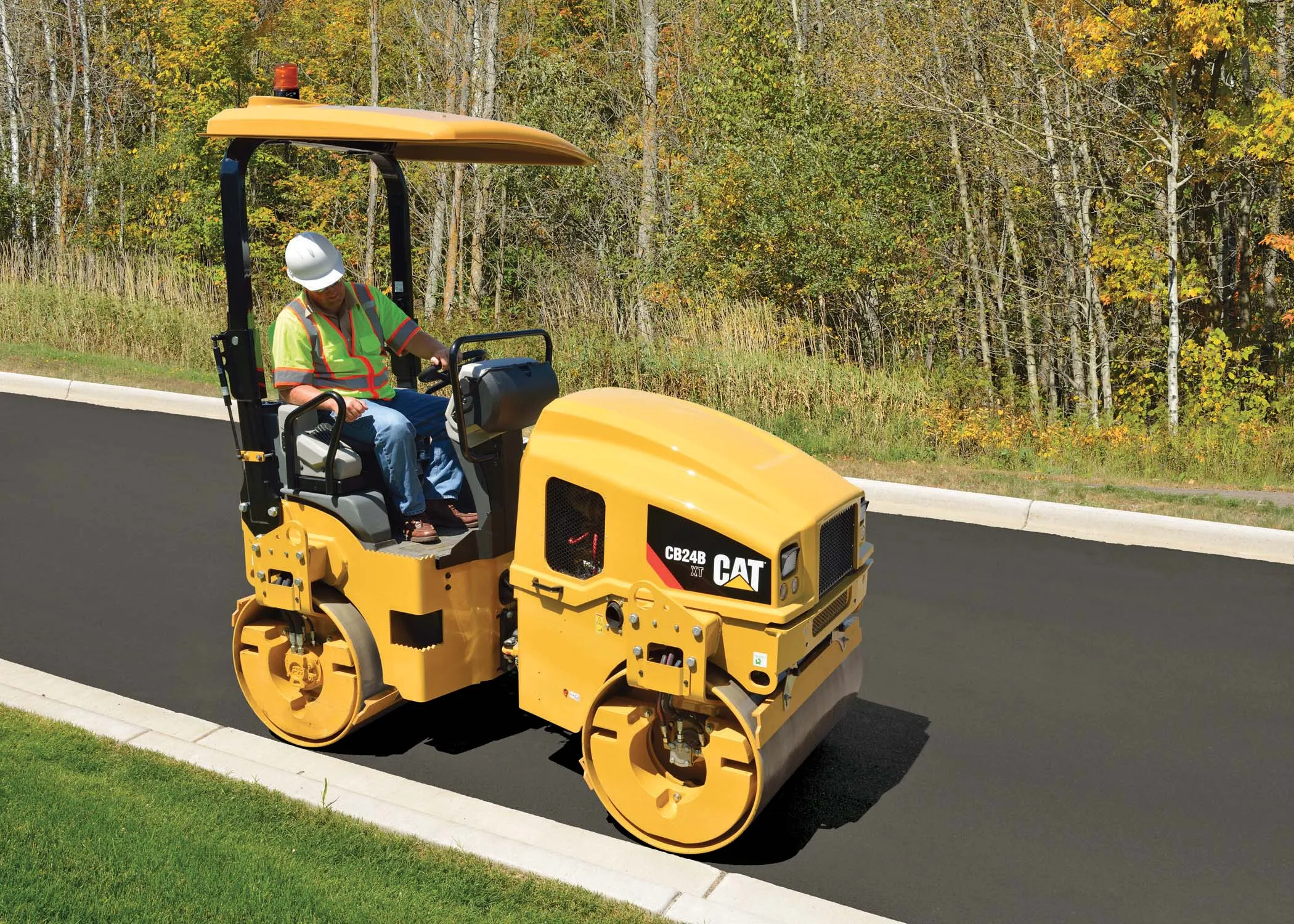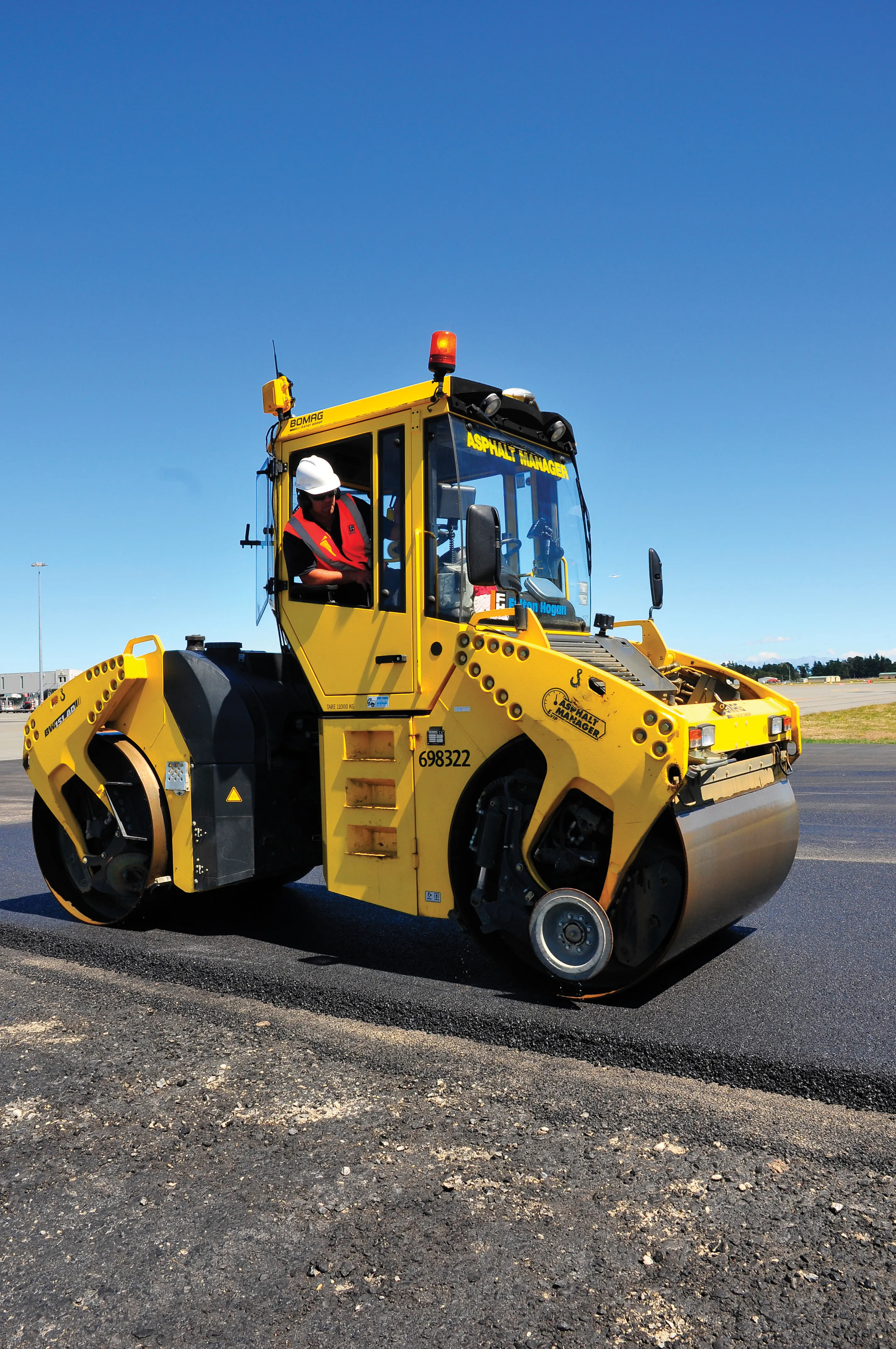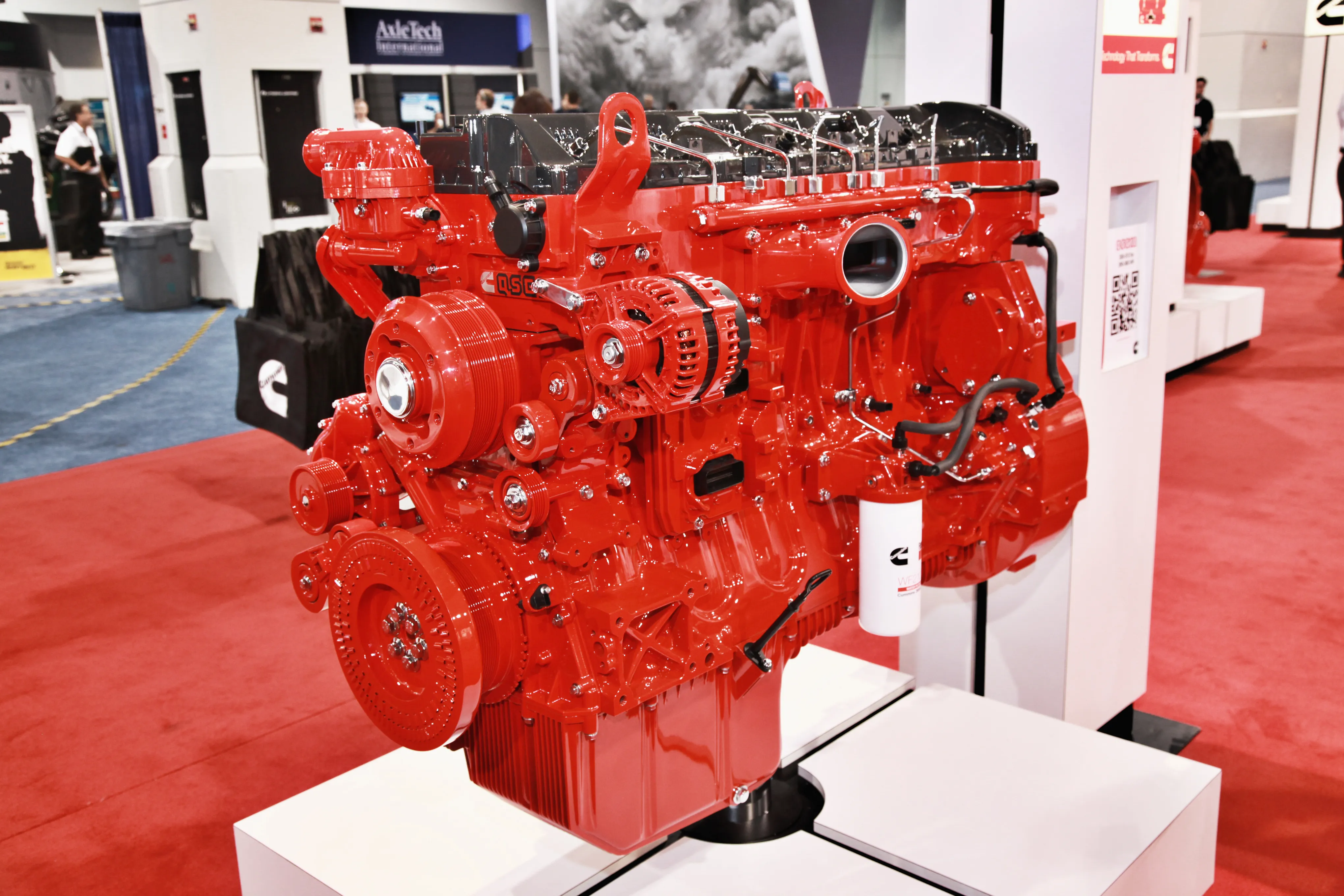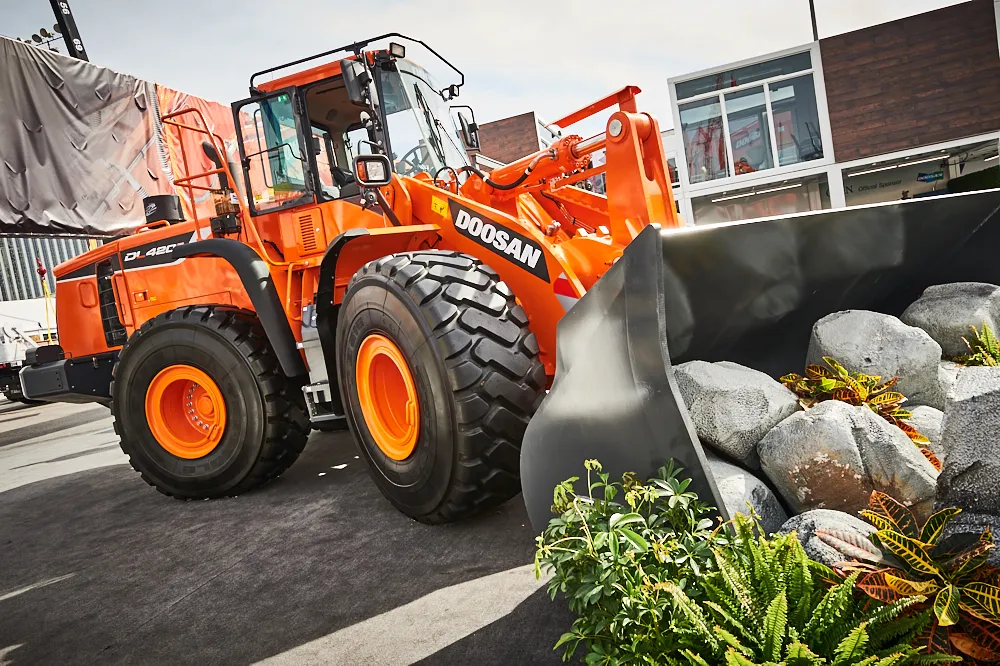
A focus for
The CVT (continuously variable transmission) wheel loader is making its North American debut at the Las Vegas exhibition and will be available later this year in the US and Canada.
Unlike torque converter transmissions, the DL420-5 CVT wheel loader’s automatic transmission is a one-to-one ratio with the engine. Automatic transmission improves powertrain efficiency in load-and-carry operations.
With this new transmission offering, Doosan says that DL420-5 CVT owners and operators will see an increase in machine performance and productivity when working in digging, loading and lifting applications.
For most tasks, operators will use the hydrostatic part of the transmission, which is more efficient than an automatic transmission in low-speed applications. This hydrostatic system provides good overall performance at lower engine rpms. An on-board colour and text indicator on the dash panel informs operators when the machine is operating in the hydrostatic mode.
The result, says Doosan, is better fuel efficiency because of improved performance at lower engine rpms. There is also low heat development in the digging range.
Similar to the other Doosan wheel loaders, operators can choose between three power modes that adjust the maximum engine rpm based on the operator’s preference and the application. Since the DL420-5 CVT wheel loader uses a hydrostatic transmission, the engine rpm is not directly correlated to the machine’s travel speed, so maximum travel speed remains unaffected.
The popular auto-shutdown system is also available on the new DL420-5 CVT wheel loader to help owners and operators save valuable fuel during non-working conditions. Operators can configure the idle time before auto shutdown, from 3-60 minutes. When enabled, the feature will shut down the wheel loader’s engine when the preset idle time is met.


